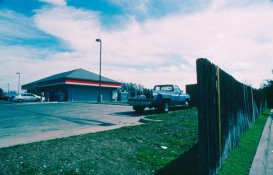markbarendt
Member
There is no way to scan a negative without some minimum adjustment. When you print optically you will have to set exposure time with a set of filtration to begin with. This is really the same when you scan a negative. You simply have to apply some adjustment to begin with. It is rather a basic setup for the scan than adjustment.
I understand having a set of baseline scanner setting to match say the Superia 400 I sent.
Beyond that I don't want the lab to do anything to the proof.
Is that such a tall order?
A lab operator would be incredibly non productive if he/she is forced to turn off all basic auto functions, such as auto exposure and auto color balance.
Don't care because I'm not asking for any fixes.
Most, if not all, of the scans would be way off and will need a lot of manual adjustment to get the scans to look OK. If you own a film scanner you can try to turn off auto exposure and auto color balance. You will understand how difficult or impossible to scan films without them.
Again, as a customer, I don't care.
What I do know is that one lab turns off their auto correct and I get the results I expect, the other tries fixing everything and I don't.
There was a third lab in town that went out of business a few months back, they had the same problem, always trying to fix it.













